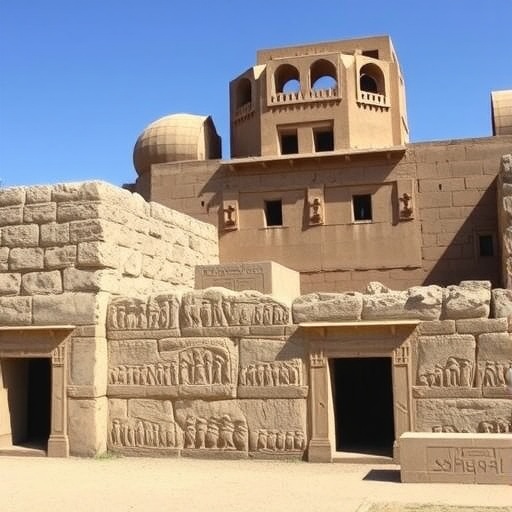The exploration of ancient technologies is a fascinating field that not only reveals the resourcefulness of early civilizations but also offers insights into their cultural practices and societal structures. A recent study undertaken by renowned researcher N. Groat delves into the ancient distillation technology utilized in the Gandhāra region. Through a thorough reassessment of the traditional Gandhāra still and extensive experimentation and experimental reconstruction, the research sheds light on early distillation methods and their implications.
The study’s basis is rooted in the rich historical context of the Gandhāra region, situated in what is now northern Pakistan and eastern Afghanistan. This area was a melting pot of various cultural influences primarily due to its position along the Silk Road. The cross-cultural interactions facilitated the exchange of ideas and technologies, making the examination of ancient techniques critical for understanding their significance in the era. Distillation, a process pivotal for producing essential oils, spirits, and medicinal concoctions, was an innovation that likely evolved from this vibrant interchange of knowledge.
Groat emphasizes the necessity of experimental archaeology—the practice of recreating historical techniques using the knowledge and materials of the past. In his study, he meticulously reconstructed a Gandhāra still, aiming to replicate the ancient process as closely as possible. This hands-on experimentation provided a platform to test hypotheses derived from archaeological and textual evidence, thereby revealing the practicalities of how distillation was carried out in those times. The results not only highlight the efficiency of this ancient technology but also its potential impact on the economy and health of the communities involved.
The experimental component of the study faced several challenges, particularly concerning the authenticity of materials used. The choice of raw materials was crucial, given that the chemical compositions of plants from antiquity significantly differ from contemporary flora. This discrepancy posed potential issues in replicating the exact outcomes of the distillation process. Nonetheless, Groat’s commitment to authenticity ensured that the results obtained from the experiments would provide a reliable interpretation of ancient practices.
One notable finding from the experiments revealed how variations in temperature and material composition directly affected the yield and quality of distillates. This insight aligns with modern understandings of distillation but underscores the sophistication with which ancient practitioners operated. The ability to manipulate these factors reflects a deep knowledge of chemistry held by early distillers. This realization paves the way for further research into the capacities and expertise of ancient artisans.
Moreover, the study highlights the potential links between distillation technology and the medicinal practices prevalent in Gandhāra. Ancient texts suggest that various distilled substances were employed for their therapeutic benefits. By understanding the distillation processes, researchers can better comprehend how specific distillates were utilized and their societal relevance. This intersection of technology and medicine illustrates the multifaceted role that distillation played in everyday life.
An intriguing aspect of Groat’s work is its interdisciplinary approach, integrating anthropology, archaeology, and science. Such comprehensive research not only enriches our understanding of historical practices but also emphasizes the relevance of such knowledge in modern contexts. As we look to the future, the lessons gleaned from the past could foster innovation in contemporary distillation processes, especially in the fields of herbal medicine and natural product chemistry.
Additionally, this research project serves as a stark reminder of the importance of preserving ancient knowledge systems. In a rapidly modernizing world, traditional techniques may be overlooked or forgotten. The documentation and analysis of processes like distillation ensure that these ancient practices continue to be referenced and respected. This ongoing dialogue between the past and present is crucial for maintaining cultural heritage and inspiring future technologies.
The implications of Groat’s findings extend beyond academia; they invite broader societal reflections on how ancient technologies can inform sustainable practices today. For example, exploring ancient distillation might unveil environmentally-friendly methods that could be applied to modern-day industries. The ethos of sustainability found in ancient practices provides a roadmap for contemporary endeavors aligned with ecological preservation.
In summary, Groat’s research into the Gandhāra still encapsulates a comprehensive approach to understanding not just an ancient technological process, but also the cultural and historical significance surrounding it. Through rigorous experimentation and a passionate commitment to historical accuracy, the study stands to contribute significantly to both archaeological and scientific dialogues. By shedding light on early distillation technology, N. Groat enhances our appreciation of the ingenious solutions developed by past civilizations, urging present-day scholars and practitioners to draw inspiration from this rich legacy.
Groat’s study ultimately calls for a renewed interest in the intersections between history, technology, and society. As we navigate the complexities of modern challenges, looking back at how our predecessors approached similar problems can offer invaluable insights. The ancient distillation techniques of the Gandhāra region not only represent a fascinating engineering achievement but also connect us to our collective human history.
In conclusion, the future of distillation and its applications may very well depend on how we honor and explore our past. Groat’s work stands as a testament to the relevance of ancient knowledge in shaping contemporary practices and promoting a deeper understanding of our technological evolution.
Subject of Research: Ancient distillation technology in the Gandhāra region.
Article Title: Reappraising the Gandhāra still: implications for understanding early distillation technology through experimentation and experimental reconstruction.
Article References:
Groat, N. Reappraising the Gandhāra still: implications for understanding early distillation technology through experimentation and experimental reconstruction.
Archaeol Anthropol Sci 17, 194 (2025). https://doi.org/10.1007/s12520-025-02301-8
Image Credits: AI Generated
DOI: https://doi.org/10.1007/s12520-025-02301-8
Keywords: Distillation, Gandhāra, Experimental archaeology, Ancient technology, Cultural heritage.




